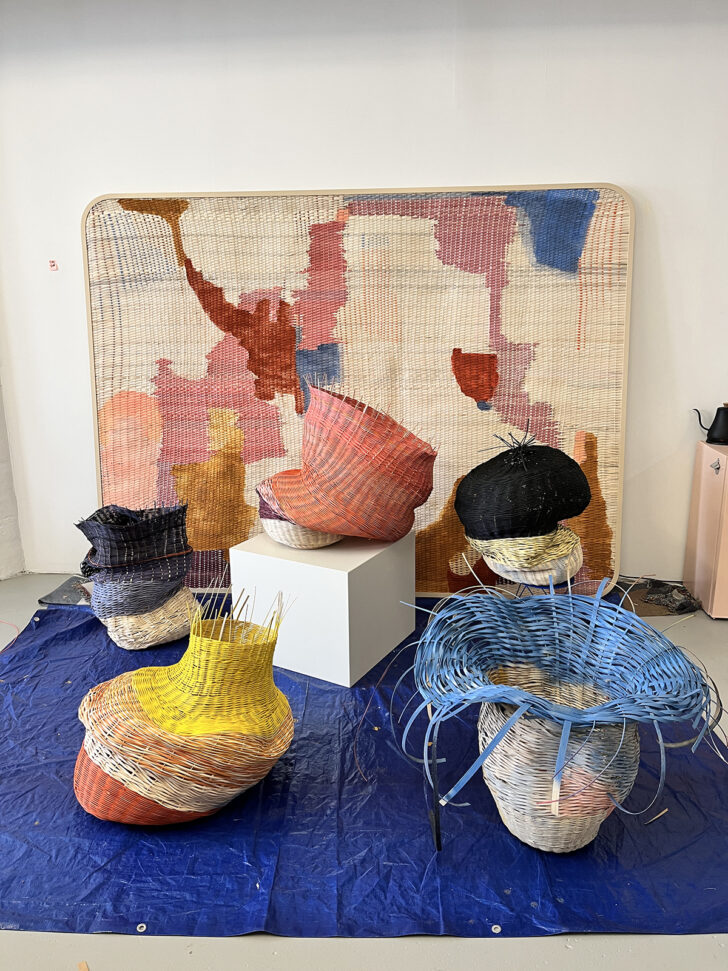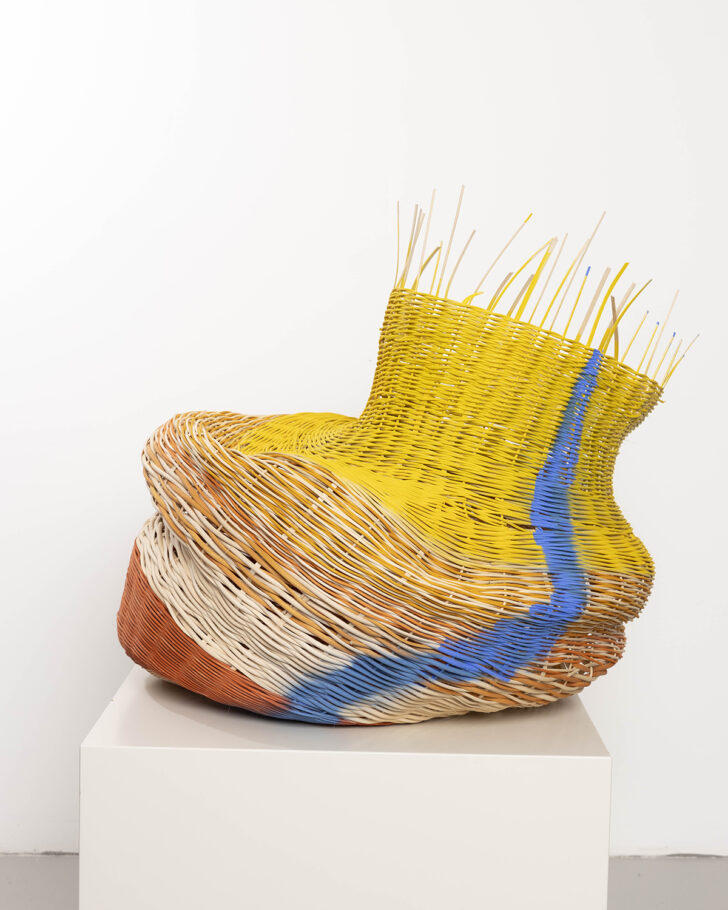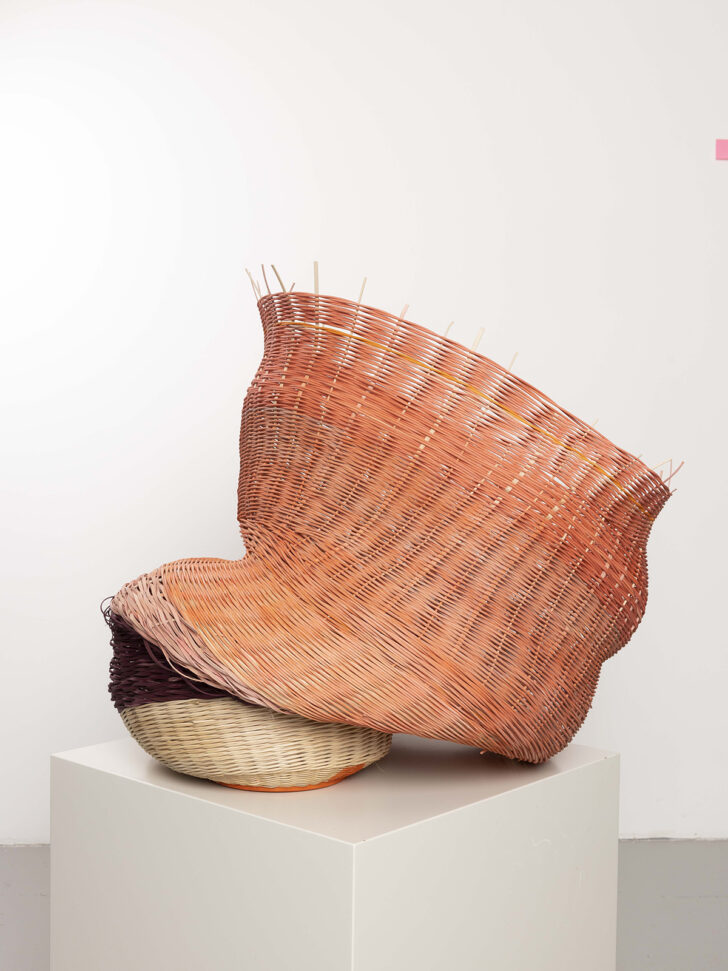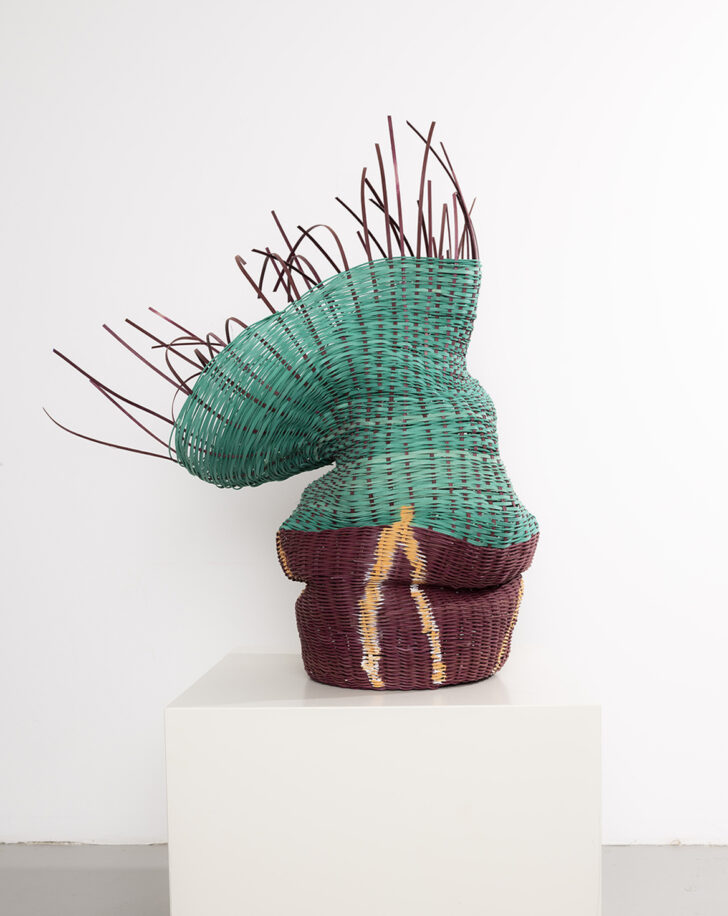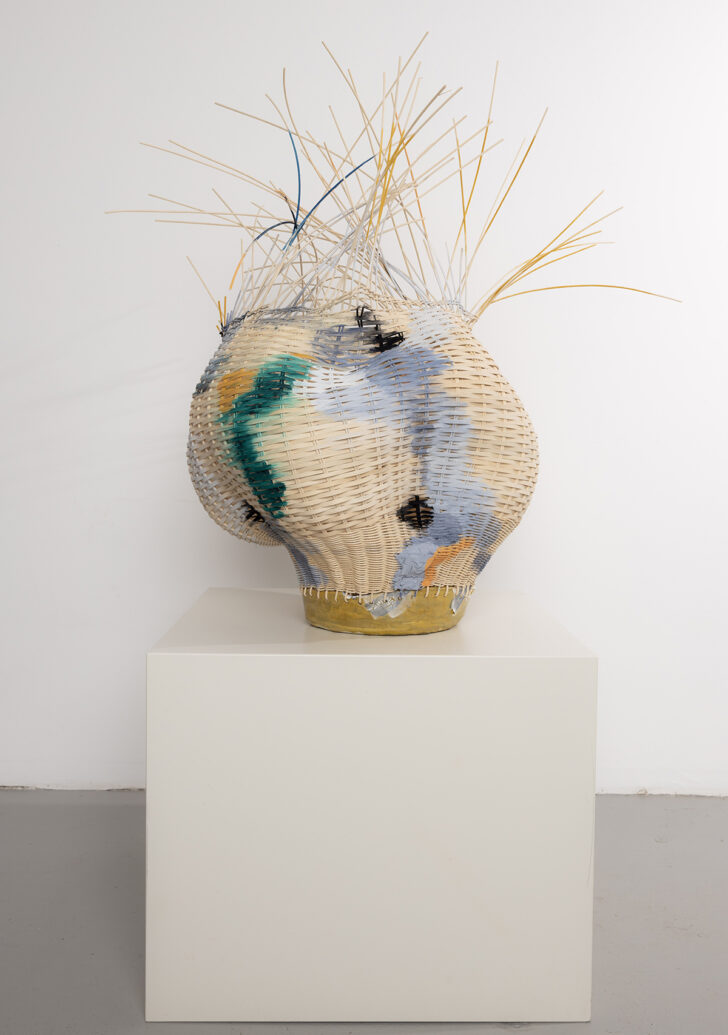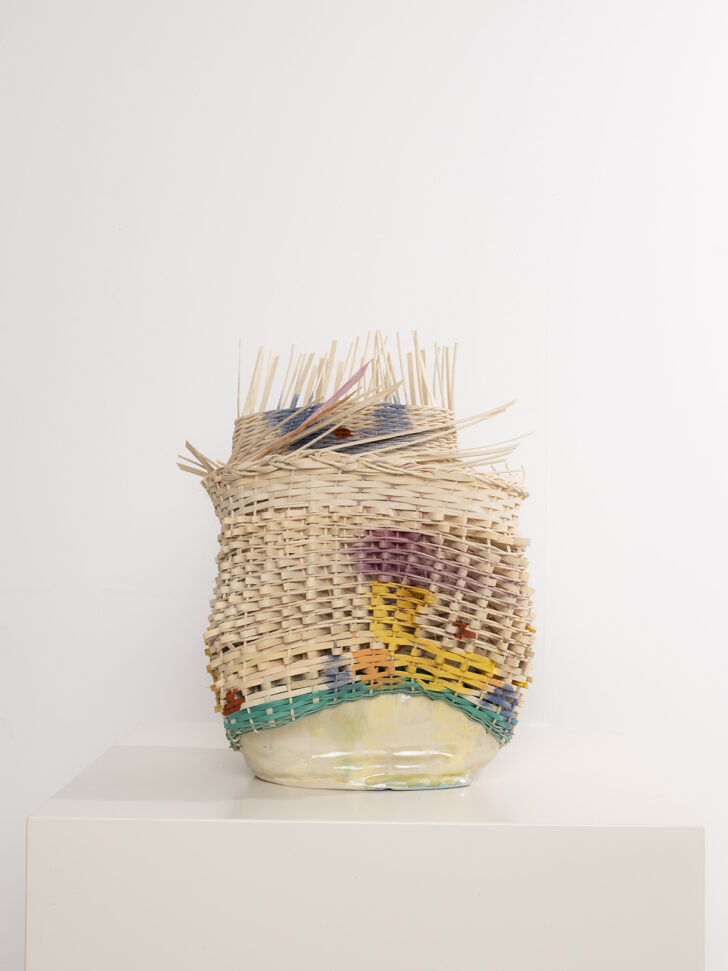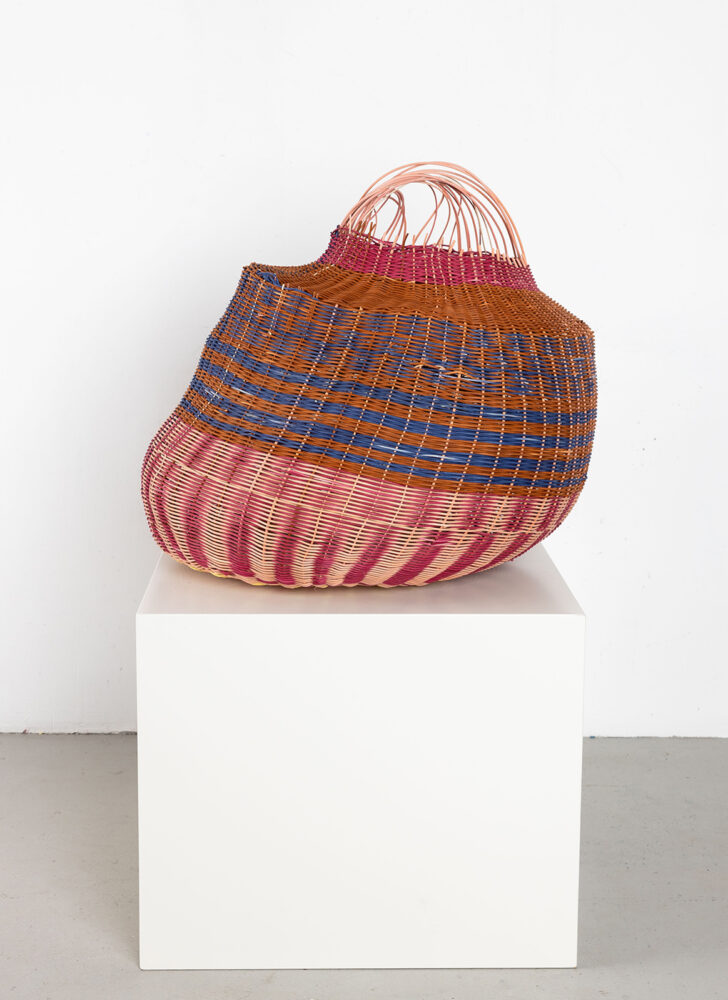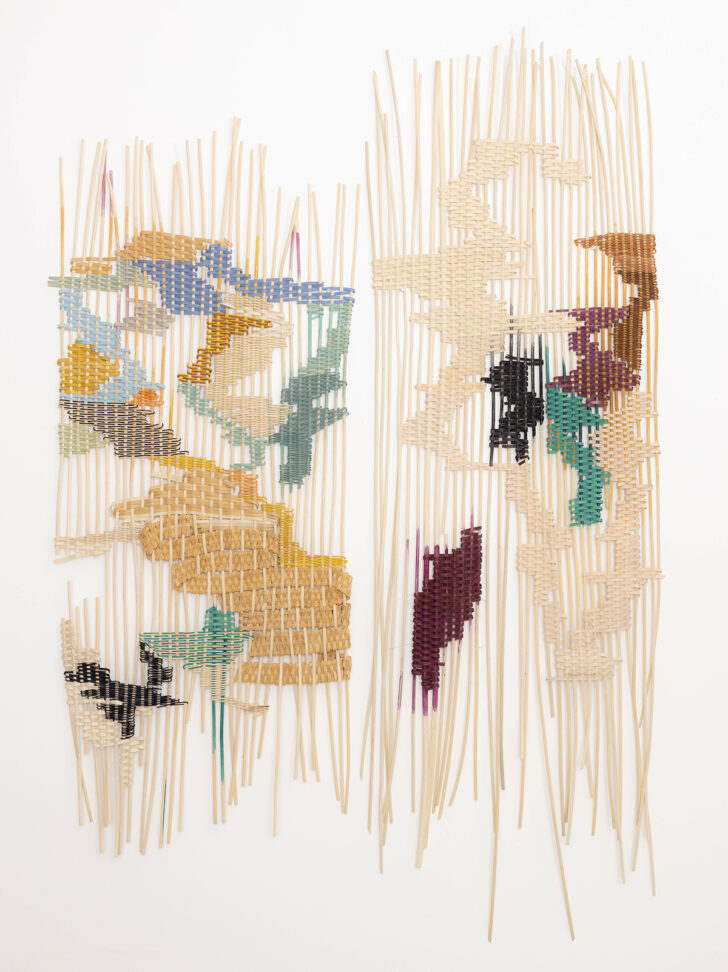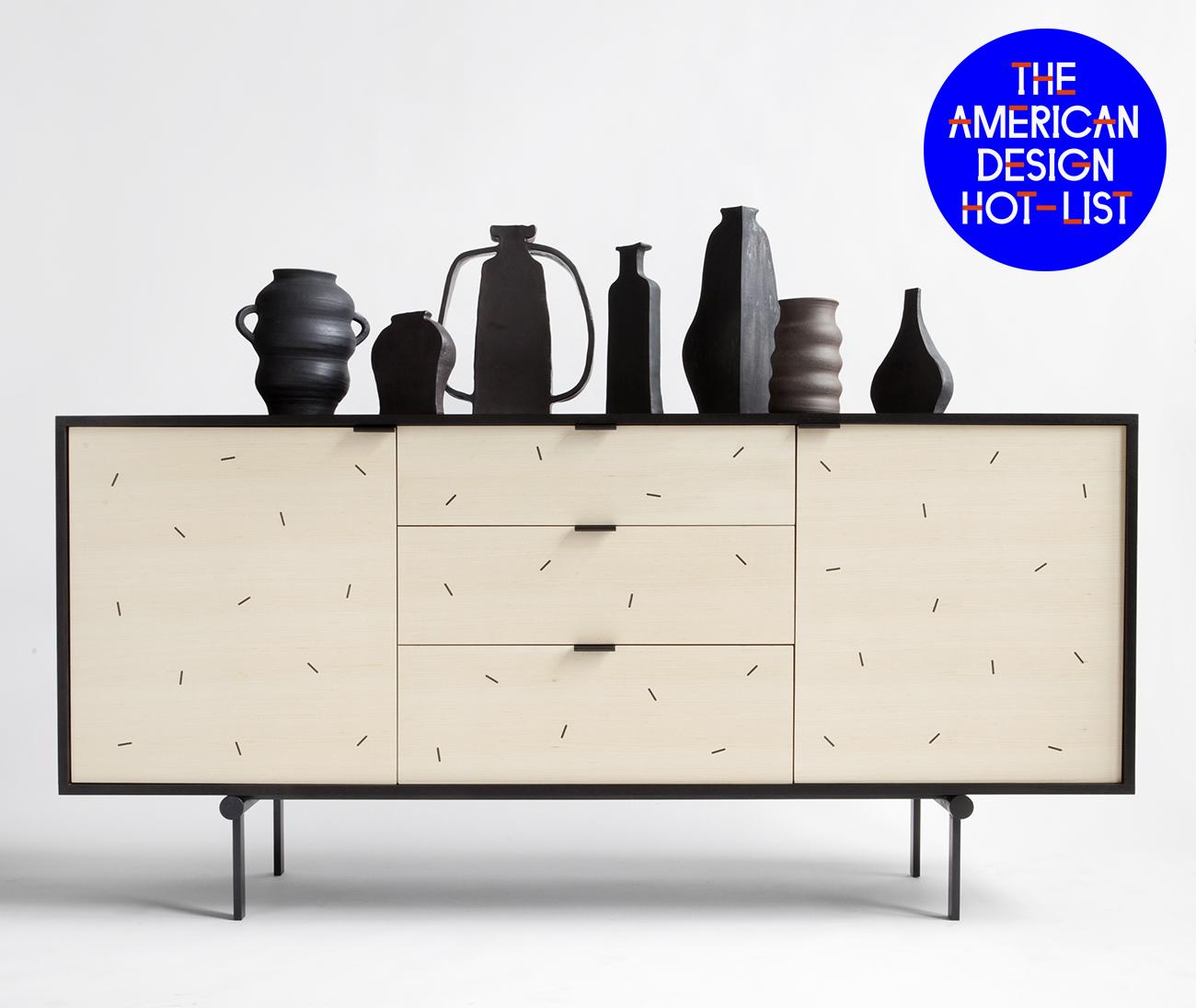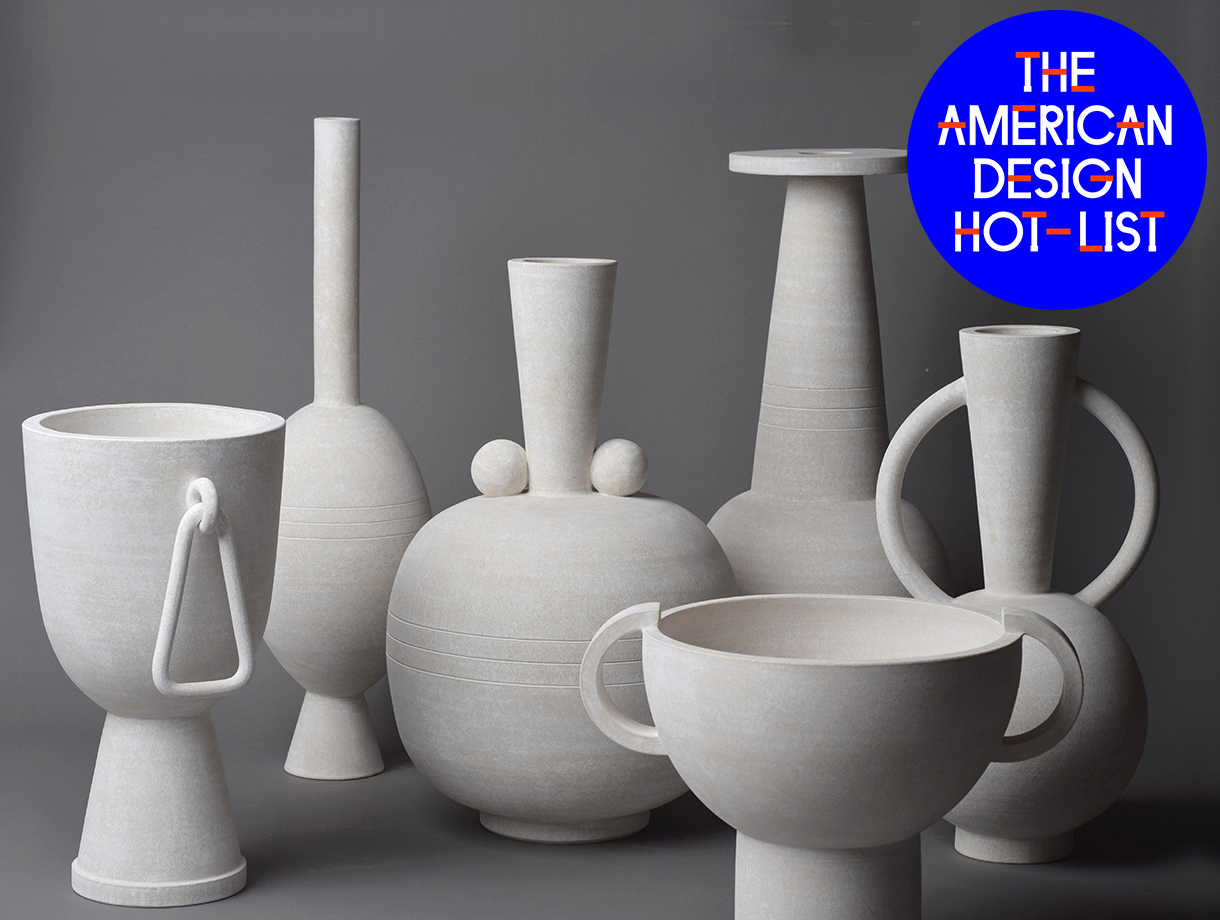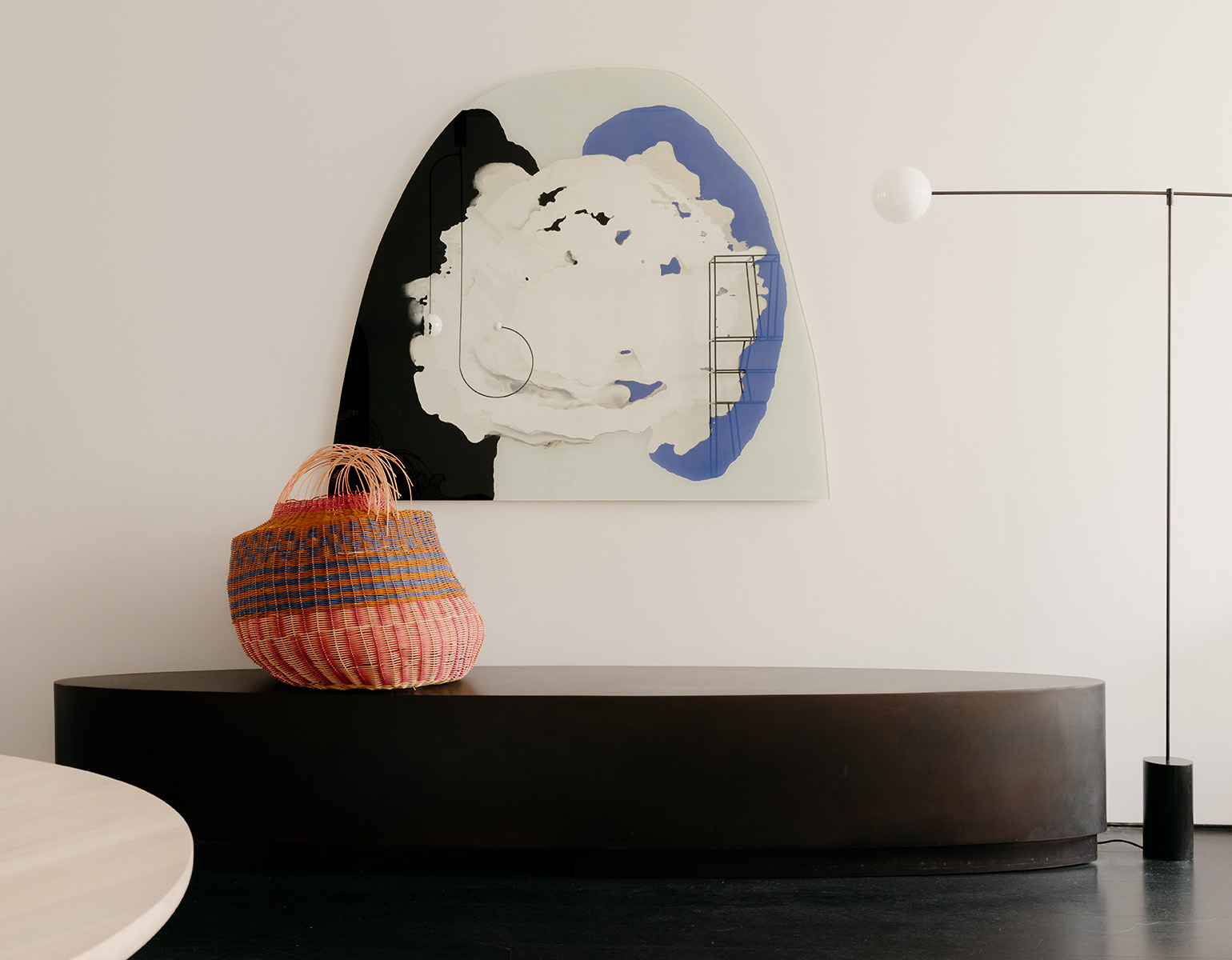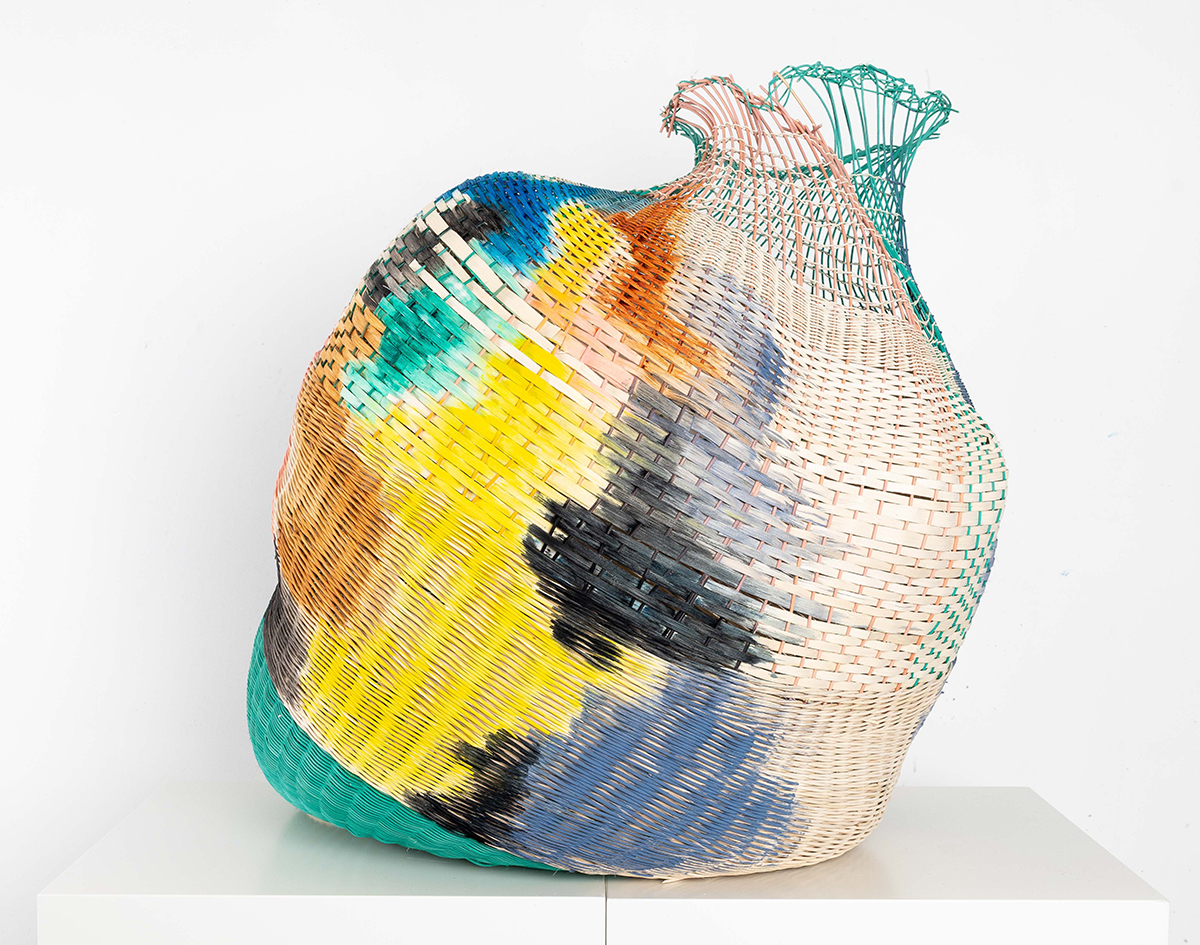
American Design Hot List 2022
Studio Herron
Chicago, studioherron.com
We’ve been following Dee Clements of Studio Herron’s career for a long time — from her gorgeous woven textiles to the rug she designed for Land of Nod (RIP) to her baby steps into basketry. But her work truly blossomed when she began working with The Future Perfect during the pandemic. Her baskets grew in size and scope, mirroring both her personal and professional growth, and they began incorporating not only hand-dyed reeds but also painterly brushstrokes that hearken back to how Clements began her career: as a painter. When we were discussing Clements’s inclusion in this list, we said, “Bet she’s working on lighting next” — turns out we were right, and we can’t wait to see the results.
What is American design to you, and what excites you about it?
I’m seeing in American design right now a sweet spot between art, craft, and design that elevates the quotidian into something dramatic, or magical, or exuberant. Namely, furniture and objects that mix typologies and/or materials to bring out fresh perspectives on the designed and built world. I am also seeing work by more women and people of color and that truly excites me! I want marginalized voices to have a seat at the table and a place in the spotlight.
What are your plans and highlights for the upcoming year?
This year I am really thrilled to have a solo exhibition of my work in Miami at Nina Johnson Gallery and a solo exhibition in my hometown of Chicago at 65 Grand, I really want to push myself to get big, wild, bold with the work. I also have several interior design projects in the works for 2023 in which I will be designing and making ambitious large scale sculptural lighting pieces. Lighting is something I have been timidly dabbling in and these projects will be an exciting challenge and opportunity to grow. My work recently became represented by The Future Perfect and I will continue to be making new pieces for them as well.
What inspires or informs your work in general?
I am inspired by The Carrier Bag Theory of Human Evolution, object ethnography, and feminism. The lineage of craft throughout human history is really interesting to me. It’s often something that is profoundly connected to economics and evolution, depending on the era. For the last three years I have been hyper-focused on researching the history of patriarchy in craft and culture and how that translates to hegemonic hierarchies/structures in art, design and craft. I have been deeply fascinated by and interested in the industrial revolution in Mesopotamia between the Stone Age and the Bronze Age. It was a pivotal moment in human history that set a precedent for the future of women in society and in craft. In my work, I have been exploring this through form, by making sensous, voluptuous, large scale vessels that take up physical space or spill over a surface or get a little unruly. I use basket weaving, which is often associated with women’s work, and more recently have brought ceramics into my material language.
